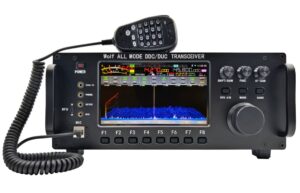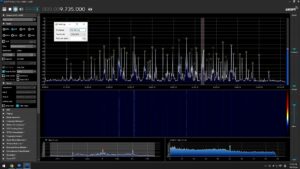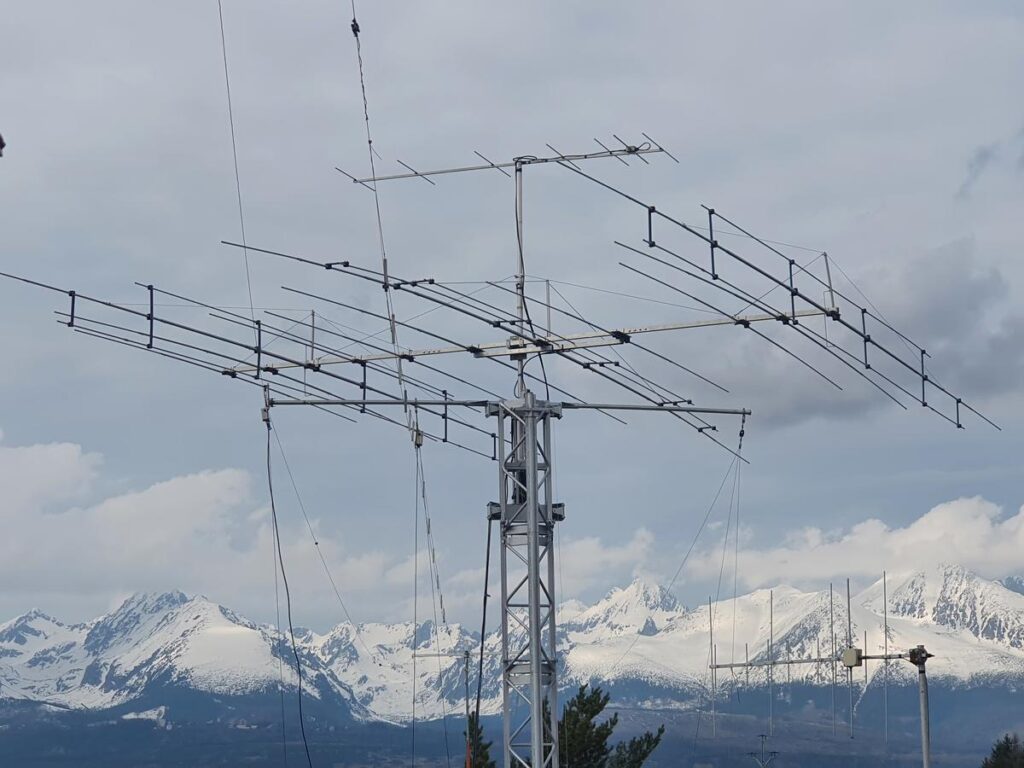International competitions OK-OM DX CW contest 2025, organized By the Czech Radioclub a By the Slovak Amateur Radio Association, will take place 8th-9th November 2025. They are intended for all radio amateurs in multiple categories - single and multi-band, QRP, LP, HP, multi-op and Shortwave Listener. The competition takes place on bands from 1.8 to 28 MHz, except WARC. CW operation is used. CW operation.Electronic logs in the format C a brillomust be submitted via the web okomDX.crk.cz within 7 days after the competition. The evaluation is based on the number of points for connections and multipliers (OK/OM districts, countries DxCC/WAE). Winners of the main categories will receive plaques, others PDF diplomas. Connections with Russian and Belarusian stations are not counted. All decisions of the evaluator are final.
1. Organizer
The Czech Radioclub (ČRK) in cooperation with the Slovak Amateur Radio Union (SZR) announces international competitions OK-OM DX CW Contest 2025.
2. Competition date
The competition takes place every second full weekend in November, so from 12:00 UTC on November 8 to 11:59 UTC on November 9, 2025.

3. Categories
- SO a B - single operator, all bands, power up to 1500 W
- SO a B - single operator, all bands, power up to 100 W
- SO a B QRP - single operator, all bands, power up to 5 W
- SOSB - single operator, one band (160, 80, 40, 20, 15, 10 m); categories HP, LP, QRP
- MOST - multiple operators, one transmitter
- MO2T - multiple operators, two transmitters
- Shortwave Listener - listeners, all bands
All bands from 1.8 to 28 MHz, except WARC bands.
3.1
The participant can participate in multi-band and multiple single-band categories simultaneously. Can register up to seven categories - all bands, 160 m, 80 m, 40 m, 20 m, 15 m, 10 m - and get up to six diplomas.
3.2
Participants who compete only on one band, but during the competition make connections on other bands, must also send a control log from these other bands.
3.3
Participants are evaluated in three groups: world, Europe, OK+OM.

4. General rules
4.1
Transmitters and receivers must be located in a circle with a diameter of at most 500 meters and all antennas must be connected to the equipment by power cables.
4.2
Free use is allowed in all categories packet and web-clusters.
4.3
The use of an IP network for remote reception (including internet SDR receivers) is considered unsportsmanlike behavior and is a reason for disqualification.
4.4
Self-spotting (announcing one's own call sign in the cluster) is prohibited. Arranging connections via phone, internet, or other similar means before and during the competition is Prohibited.
It is not allowed to use other marks to maintain the working frequency in another band, negotiating schedules or tuning for the purpose of gaining multipliers.
It is not allowed to use other brands to maintain the working frequency on another band, to negotiate skeds or to retune to obtain multipliers.
One operator may freely tune between bands, but may transmit only one signal at any time.
One operator may freely tune between bands, but may transmit only one signal at any moment.
A station in the 'one operator' category is operated exclusively by one person, who handles all activities - station operation, logging contacts, and working with the cluster.
A station in the "one operator" category is served exclusively by one person, which ensures all activities – station operation, recording connections and working with the cluster.

MOST stations (multi-operator, one transmitter) are limited by the 10-minute rule. Time is counted from the first contact on the band. Only one signal may be transmitted at any time. An exception is a signal on another band, if it is to establish a connection with a new multiplier. This second band is also subject to the 10-minute rule and calling a CQ is not allowed on it.
MOST stations (multi operator, one transmitter) are limited the 10-minute rule. The time is calculated from the first connection on the given band. It can only be broadcast at any given time one signal.
The exception is a signal on another band, if it is about establishing a connection with with a new multiplier. This second band is also subject to the 10-minute rule and it is not allowed to call a call on it.
If connections are made in violation of this provision, they may be noted in the journal, but will not be counted not even penalized - they will only be used as control and will be recognized for the opposing station.
MO2T (Multi-op, two transmitters): maximum two signals on two different bands simultaneously. Each transmitter may tune between bands up to 8 times per hour (00-59 min). Example: tuning from 40m to 80m and back counts as two tunings. Both stations may make contacts as needed.
MO2T (Multi-op, two transmitters): maximum two signals on two different bands simultaneously. Each transmitter can be retuned between bands maximum 8x per hour (00–59 min).
Example: retuning from 40m to 80m and back counts as two retunings.
Both stations can establish connections as needed.
Contest code
5.1
Stations outside OK-OM: report + sequence number of the connection, starting with 001.
- MOST can use common numbering or separate for each band.
- MO2Ts can be numbered separately for each band or for each station separately. Connections must be clearly marked in the diary.

5.2
Stations OK and OM: report + district sign (three letters).
Points for connection
For OK and OM stations:
- connection with own country - 2 points
- connection with another country on the same continent - 3 points
- connection with another continent - 5 points
Note: OK and OM are separate DXCC entities, connection OK-OM counts for 3 points.
For stations outside OK-OM:
- connection with OK or OM - 10 points
- connection with own country - 1 point
- connection with another country on the same continent - 3 points
- connection with another continent - 5 points
6.3
Stations /MM (mobile at sea) sa do not count as multiplier, but they always give 5 points.
6.4
Shortwave Listener stations (listeners) must record one or both stations in the connection; otherwise, the same rules apply to them.

Duplicates
7.1
A duplicate is a repeated connection with the same station on the same band.
If the first connection is valid, further connections are for 0 points.
If the first connection was invalid, the next one is counted.
7.2
Duplicates are listed in the log, it is not necessary to mark them.
Multipliers
Are used two types of multipliers:
- each district OK and OM separately on each band,
- each DXCC or WAE country separately on each band.
Total score
Total score = (sum of points for connections) × (sum of all multipliers: districts OK/OM + countries DXCC/WAE).
The calculation of the total score is done by the organizer after the end of computer processing.
Conditions for accepting logs
- Logs are accepted only electronically in Cabrillo format.
- They are sent exclusively via the web interface at the address http://okomDX.crk.cz.
- All times must be in UTC.
- All sent and received data must be recorded in the log.
- The category, email, and postal address of the participant must be included in the header of the Cabrillo log.
- If the log cannot be sent via the web interface, it can be sent by email to the address: okomDX@crk.cz.

11. Logs
11.1 Logs must be delivered within 7 days after the end of the contest, i.e. j. by November 16, 2025, 23:59 UTC.
11.2 Successful delivery of the log is immediately confirmed on the website and a confirmation email is sent to the address provided in the Cabrillo file header.
11.3 SWL logs are sent by email to the address okomDXc@crk.cz in electronic form.
Recommended software: Shortwave Listener DQR Log by the author SP7DQR – http://SP7DQR.pl/en/contests.php.
12. Diplomas and plaques
12.1 Plaques will be awarded to the winners of the main categories who also meet the specified criteria.
One station can receive in a given year a maximum of one plaque, in the category in which she scored the most points.
All participants can download an electronic diploma in PDF format.
Diplomas will be available for all locations and categories; paper diplomas are not sent out.
12.3 Criteria for awarding plaques:
| Category | Condition |
|---|---|
| M-S | min. 1000 valid connections |
| M-2 | min. 1500 valid connections |
| SO- a LL HP | min. 500 valid connections + at least 7 participants in the category |
| SO- a LL LP | min. 400 valid connections + at least 7 participants |
| SO- a LL QRP | min. 200 valid connections + at least 3 participants |
| SO-SB HP | min. 200 valid connections + at least 7 participants |
| SO-SB LP | min. 100 valid connections + at least 7 participants |
| SO-SB QRP | min. 50 valid connections + at least 3 participants |
13. Summary
13.1 Each participant who submits a log will have access to the following on the website:
- UBN report,
- results,
- confirmations of connections with OK and OM districts.
13.2 Additional information:
- e-mail: okomDXcontest@gmail.com
- e-mail: okomDX@crk.cz
13.3 Decision of the contest evaluator OK-OM Dx CW is final.
14. Statement of the Czech Radioclub on the ongoing war in Ukraine
Until further notice logs will not be accepted stations from Russian Federation a Belarus for evaluation.
Connections with these stations will be canceled.
Programs supporting OK-OM DX Contest
Programs that directly support OK/OM DX Contest are listed on the official website http://okomDX.crk.cz.
Districts and district codes
To find out which district a specific municipality belongs to, you can use a server such as Ministry for Regional Development of the Czech Republic.
OK/OL DistrictsPrague | OM DistrictsBr a tisl a v a , prefix OM1 | |
